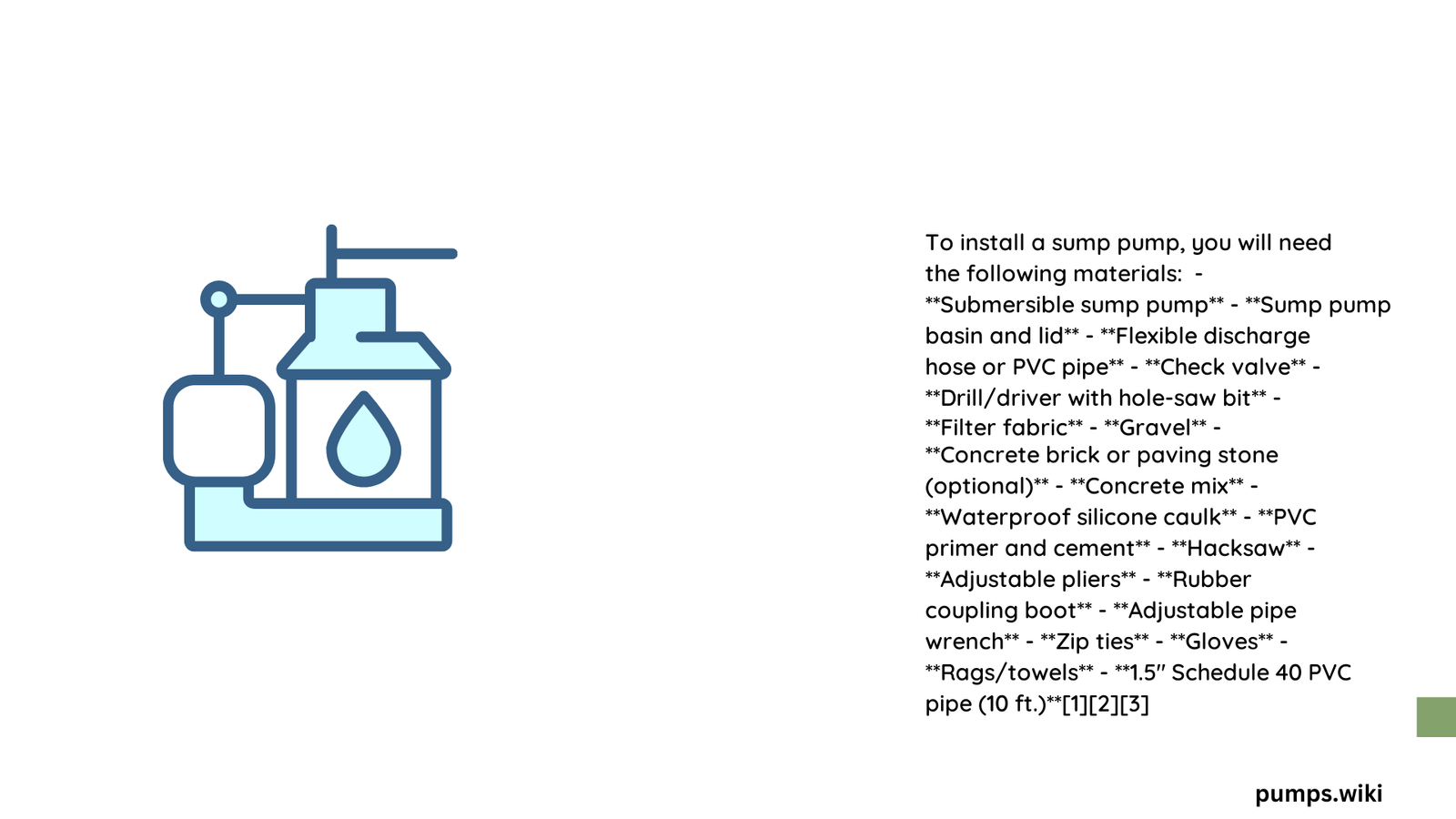Installing a sump pump requires precise materials and careful preparation. Homeowners need a comprehensive set of components including a high-quality cast-iron sump pump, PVC discharge pipes, a reliable check valve, a durable pit liner, and specialized tools. This guide will walk you through every material required to ensure a successful and efficient sump pump installation, helping you protect your basement from potential water damage.
What Are the Primary Materials for Sump Pump Installation?
Sump Pump Selection Criteria
When choosing a sump pump, consider these critical specifications:
| Component | Recommended Specifications |
|---|---|
| Housing | Cast-iron for durability |
| Impeller | Polymer-based for corrosion resistance |
| Discharge Size | 1-1/2″ standard diameter |
| Motor | Oil-filled housing |
| Seals | Ceramic mechanical seals |
What Pipes Do You Need?
For successful discharge, you’ll require:
– 1-1/2″ or 1-1/4″ PVC or ABS pipes
– Solid core piping material
– Minimum 5 feet of discharge piping
– Corrosion-resistant pipe types
Essential Tools for Installation
Prepare these tools before starting:
1. Adjustable pipe wrench
2. Hacksaw
3. Drill with 3/16″ or 1/8″ bits
4. PVC primer and cement
5. Rubber coupling boots
6. Protective work gloves
7. Zip ties for pipe management
How to Choose the Right Sump Pump Pit?

Pit Liner Specifications
A proper sump pump pit is crucial for effective water management. Consider these parameters:
– Minimum diameter: 18 inches
– Recommended depth: 25 inches
– Preferred materials: Plastic or fiberglass
– Bottom preparation: 6 inches of 3/4-inch gravel
Additional Installation Materials
Beyond the primary components, you’ll need:
– Quick-set concrete
– Gravel for pit surrounding
– Stainless steel hardware
– Check valve with appropriate pressure rating
What Are the Cost Considerations?
Estimated Budget Breakdown
| Component | Price Range |
|---|---|
| Sump Pump | $100 – $500 |
| PVC Pipes/Fittings | $50 – $100 |
| Check Valve | $20 – $50 |
| Sump Pit Liner | $50 – $100 |
| Tools/Miscellaneous | $50 – $100 |
| Total Estimated Cost | $320 – $850 |
Pro Tips for Successful Installation
- Always match discharge pipe diameter with pump specifications
- Use stainless steel clamps for secure connections
- Ensure proper sealing to prevent leakage
- Test the system thoroughly after installation
- Consider professional consultation for complex installations
Potential Challenges to Anticipate
While DIY installation is possible, be prepared for:
– Precise measurements
– Potential concrete cutting
– Proper pipe alignment
– Electrical connections
– Water drainage considerations
Maintenance Recommendations
- Inspect pump annually
- Clean pit and remove debris
- Test pump functionality seasonally
- Lubricate moving parts
- Replace worn components promptly
Reference:
1. Zoeller At Home Sump Pump Guide
2. Yes Plumbing Installation Instructions
3. Family Handyman Sump Pump Tutorial
